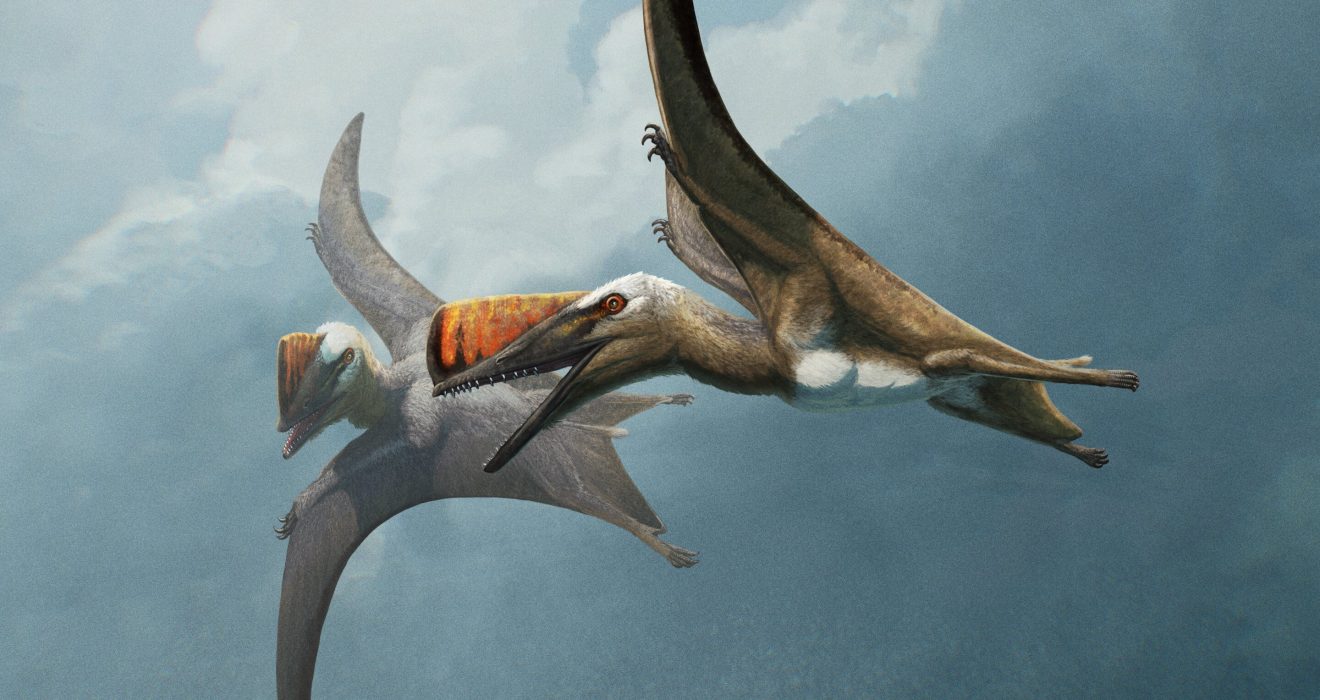In an article published in the journal Current Biology, a team led by Dr. David Hone from the Queen Mary University of London describes Skiphosoura Bavarica, an ancient pterosaur that bridges the evolutionary gap between early and later species of these creatures.
Pterosaurs, the extinct flying reptiles that coexisted with dinosaurs, are among the most interesting creatures of prehistoric times. These fascinating beasts ranged greatly in size, with some of the largest species having wingspans of up to 10 meters, whilst their forefathers were limited to approximately 2 meters. Now, a newly found species sheds information on the evolutionary change that enabled pterosaurs to grow larger and control the skies.
Introducing Skiphosoura Bavarica: Unique Fossil from Bavaria
Skiphosoura Bavarica, or “sword tail from Bavaria,” is a rare specimen from southern Germany, known for its well-preserved fossils. Its name reflects the fossil’s distinguishing feature: a stiff, pointed, and exceptionally short tail. Unlike most pterosaurs, which are usually discovered smashed flat, this specimen is preserved in three dimensions, allowing scientists to study its structure in unparalleled depth.
Skiphosoura’s wingspan in life would have been around 2 meters, comparable to large current birds such as the golden eagle. Almost every bone in the collection is intact, offering vital information about its morphology and evolutionary significance.
Two Major Groups of Pterosaurs
Since, two centuries, paleontologists have categorized pterosaurs into two primary categories.
Non-pterodactyloids (Early Pterosaurs):
- Short heads with short necks.
- A short wristbone in the wing.
- A lengthy fifth toe of the foot.
- Long tails.
Pterodactyloids (Late Pterosaurs):
- Large heads with long necks.
- Long wristbones.
- A decreased fifth toe.
- Short tails.
While these distinctions well-documented, the timing and sequencing of these transitions remained unknown for many years.
Bridge the Gap: The Role of Darwinopterans
Darwinopterans, or intermediate species, were discovered in the 2010s, marking a significant breakthrough. These fossils revealed that the head and neck evolved first, taking on a pterodactyloid form, while the rest of the body retained features of early pterosaurs. This discovery was significant, but concerns persisted concerning the evolutionary phases preceding and following the Darwinopterans.
Skiphosoura Bavarica: The Missing Link
Skiphosoura bavarica also holds a vital position in the pterosaur evolutionary tree. It is a transitional type between Darwinopterans and Pterodactyloids.
Key characteristics of this species include:
- The skull and neck resemble those of pterodactyloids.
- The wrist bone is longer than in earlier Darwinopterans.
- A shortened fifth toe and tail, but not as much as in pterodactyloids.
As a result, this combination of characteristics provides a step-by-step explanation of how pterosaurs evolved into larger, more complex forms.
Reconstructing Pterosaur Evolution
Moreover, the finding of Skiphosoura Bavarica has allowed researchers to improve the pterosaur evolutionary family tree. Along with Skiphosoura, a Scottish pterosaur named Dearc has been identified as an important transitional type between early pterosaurs and Darwinopterans.
In addition, the scientists can now use these fossils to trace the evolution of specific features across various groups.
- Head and neck: Size gradually increases
- Wrist bone: progressive elongation
- Fifth toe and tail: Steady diminution
Thus, this series of modifications provides a detailed picture of how pterosaurs evolved from small, early species to huge, long-necked pterodactyloids who ruled the skies.
The Significance of Size
Skiphosoura and Dearc are extremely huge for their period. This shows that the characteristics that allow pterodactyloids to grow to huge sizes were already emerging in these transitional species. To sum up these early giants too most likely had a major advantage in terms of flying efficiency and ecological domination, paving the way for the subsequent success of pterodactyloids.
Insights from Modern Technology
Skiphosoura was studied using advanced preparation techniques and current imaging methods. René Lauer of the Lauer Foundation stressed the significance of digital photography, namely visible and ultraviolet light imaging, in examining the fossil. These procedures showed minute details that were not visible in typical lighting settings.
Stefan Selzer, another project author, stated that the specimen’s disarticulated bones posed a problem, but thorough processing revealed its distinct combination of traits.
Expert Perspectives
The main researcher, Dr. David Hone, described the discovery as “an incredible find” and emphasized its importance in understanding pterosaur evolution. “This study helps us understand how these extraordinary flying animals lived and evolved. “Hopefully, it will encourage more research into this critical evolutionary transition,” he said.
In particular, Adam Fitch of the University of Wisconsin-Madison said, “Skiphosoura represents an important new form for working out pterosaur evolutionary relationships and understanding how this lineage arose and changed.”
The Bigger Picture
In conclusion, the recent finding of Skiphosoura Bavarica demonstrates science’s ability to reveal the mysteries of the past. It fills a gap in the evolutionary history of pterosaurs by demonstrating how gradual modifications over millions of years resulted in some of the most amazing creatures to ever fly.
Additionally, fossils are uncovered and technology advances, our understanding of pterosaurs and their development will definitely grow, providing new insights into the extraordinary history of life on Earth.

